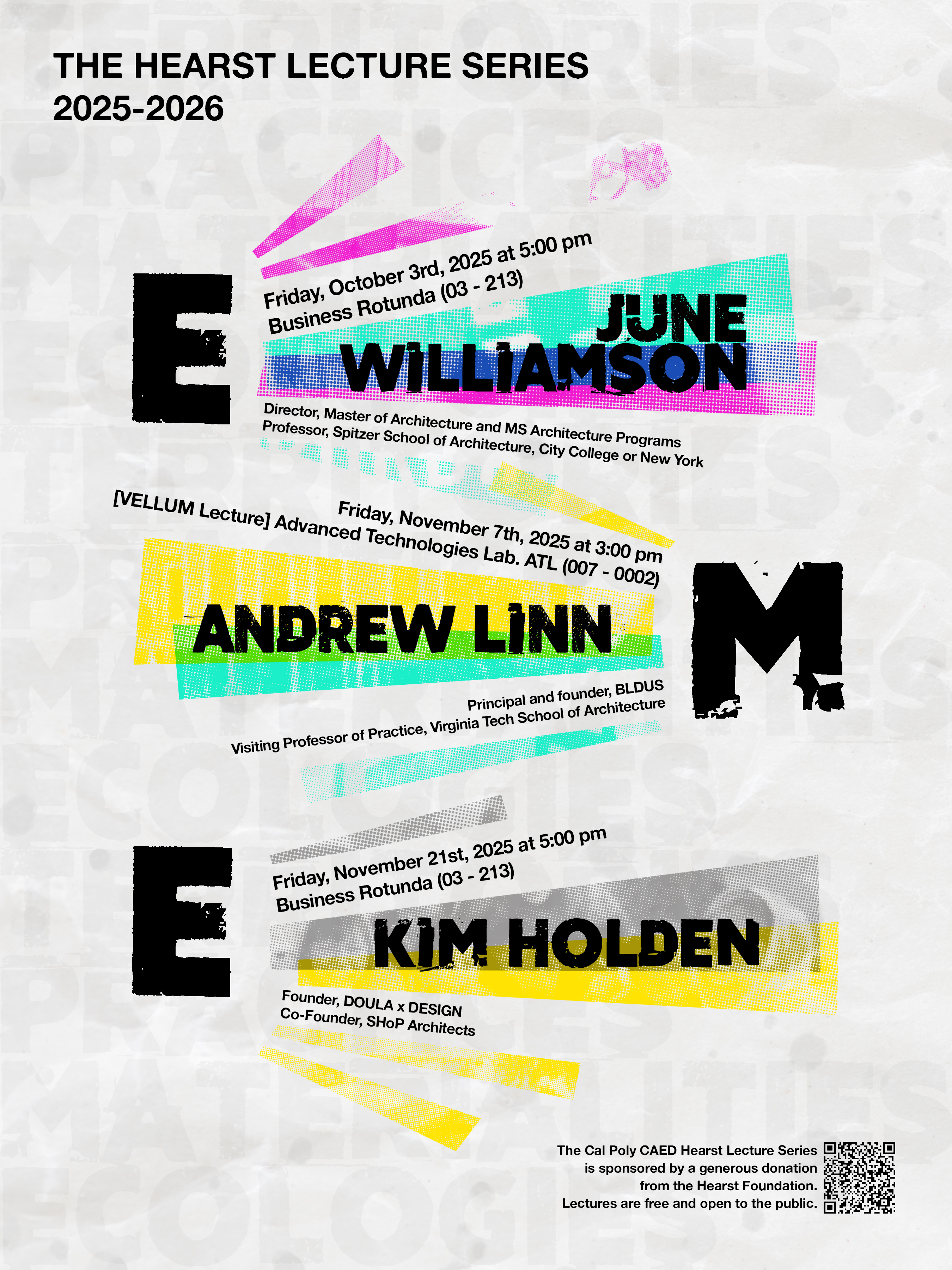Cal Poly Digital Twin Set to Model Campus Environment
by Caroline Roistacher
The Cal Poly Digital Twin project — composed of a team of three students and a faculty member — is in the process of creating a virtual copy of Cal Poly’s campus. This project will create an accessible 3D model of Cal Poly through a web-based platform showing real-time conditions of campus.
This project is beneficial for several reasons. Not only does the project help with facility management and operations but also provides convenience to students and community members.
Fourth-year construction management student Enrique Duran has been working on the project since December 2022.
“One of the main things that we're trying to do is just democratize information to the community,” Duran said. “When you're able to see a model of what's going on in real-time, you're gonna be able to make decisions better.”

Evan Cheung, Andrew Rasas and Enrique Duran demonstrating how to use augmented reality (AR) goggles with President Armstrong.
Construction Management Department Head Jeong Woo also explained the benefits of the Digital Twin Project.
“If you want to visit one of the campus buildings — let's say the library. With this digital twin model connected to certain databases showing the availability of study spaces, you can check if they are available before going there.”
Woo expressed that an overarching benefit of this project is the collaboration and interdisciplinary outcomes of the students involved. Construction management, civil engineering, computer science and electrical engineering students all combined their expertise to make the project work.
“The Digital Twin Project is the perfect example of Learn by Doing, together,” Woo said.
Andrew Rasas is a fourth-year construction management student who is also working on the project. He emphasized how no other known college campus is completing a project like the Digital Twin.
“Construction management is a field that is growing in importance,” Rasas said. “Having Cal Poly students and future alumni with this experience will put us at the forefront of the industry.”
The project has been broken up into three phases. First, the team conducted an exterior reality capture, capturing the exterior campus's built conditions. Students were able to cover a large scope in a smaller amount of time and completed this phase in the summer of 2023.

Fourth-year student Evan Cheung with a drone
Currently, the team is in the second phase, where they are repeating this process with the campus interior by scanning the inside of all of the buildings. This is no small task — there are over 100 buildings on the campus. Therefore, the team is currently investigating how to capture all buildings and the time it will take.
The final phase will be processing the data captured and modeling the digital twin. The team hopes that there will be a practical application of the Digital Twin on the Cal Poly campus after two years. However, it is an evolving project, and the overall goal is to expand its use in many ways.

Robot scanning exterior walls at Simpson-Strong Tie Materials Demonstration Laboratory and interior of student-built shed
“There's a lot of innovation going on with construction technology,” Duran said. “This is a way for students to really get first-hand experience with utilizing this technology that's starting to emerge.”
The project was initially funded two years ago by a grant from the research division of Cal Poly. There was then additional funding from CAED. Since then, various industry partners such as Autodesk and Drone Deploy have also funded the project.
“It’d be great to use some of the solutions that we’d like to do with the Digital Twin, but we also have to invest in that equipment, which is a huge sum of money,” Duran said. “Donations are definitely helpful for being able to pursue those opportunities and allow for students to get that experience and utilize that technology.”
To support innovative projects such as the Cal Poly Digital Twin, please consider donating by clicking Give Now.



